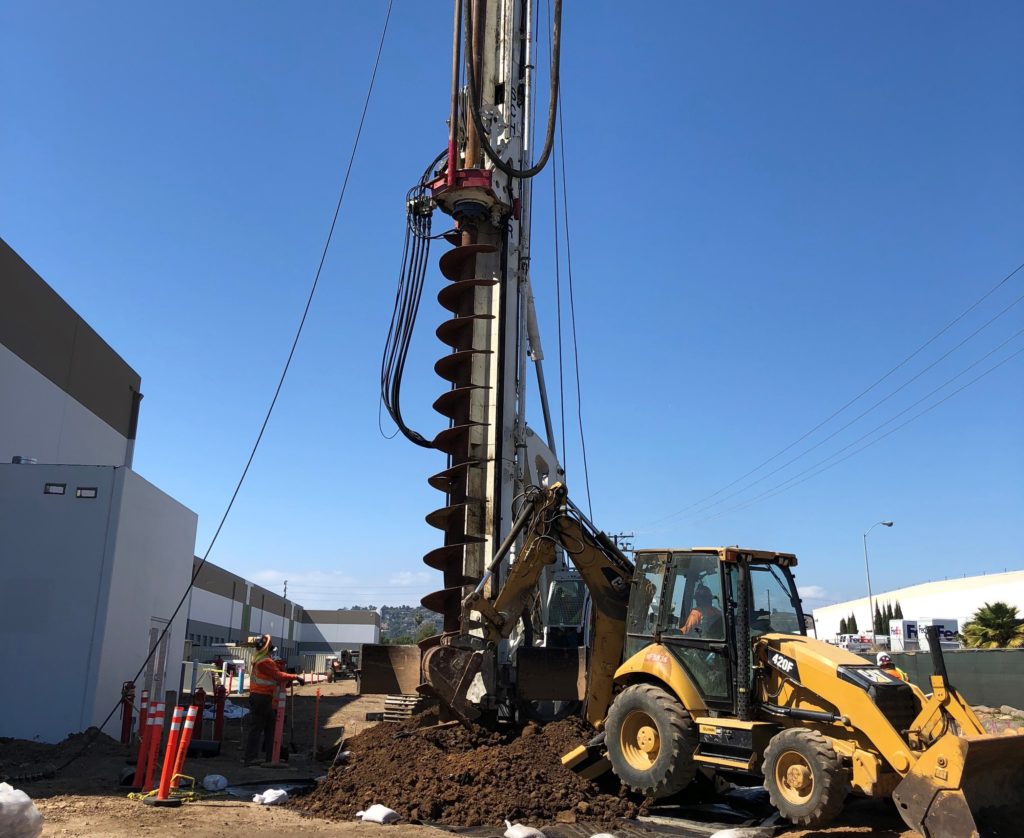Remedial investigations and cleanup actions at federal and state hazardous waste sites are a complex, lengthy, and expensive endeavor. Environmental, Health, and Safety Managers can’t afford to go it alone. By working with a team of experienced environmental consultants, responsible parties can proactively manage their risk, reduce long-term liability, and control the cost of environmental investigation and remediation on RCRA and CERCLA listed sites.
In this blog, Principal Hydrogeologist Michael Long will share four strategies in environmental remediation implemented on a Superfund site and a RCRA site to achieve site closure
Superfund Site Closure
The Comprehensive Environmental Response, Compensation and Liability Act (CERCLA), commonly known as Superfund, has been around for more than four decades. It allows EPA to clean up contaminated sites. More than 1,300 sites are in the process of remediation today. The EPA has estimated that it will take an average of eight years to clean up a site on Superfund’s National Priority List, but many of these sites have been listed since the mid 1980’s.
Why does it take so long to delist a Superfund site? The companies responsible for cleaning up those sites face ever-changing environmental, technical, regulatory, and legal issues. Closure and delisting are certainly possible. In fact, the EPA reports that at the end of fiscal year 2020, 632 Superfund sites have been returned to productive use.
Moving a site from initial investigation through delisting requires an understanding of the latest regulatory guidance and technological advances in investigation methods and treatments. Responsible parties and their environmental consulting firms who understand the use of adaptive strategies and technology advancements in environmental investigations are reducing the time it takes to delist a site.
Let’s look at four strategies applied on a Superfund remediation project to achieve delisting. The Beckman Instruments Plant in Porterville, CA was placed on the NPL in 1986. Contamination issues included lead in the soil, and groundwater contaminated with volatile organic compounds (VOCs), primarily 1,1-dichloroethene. On September 14, 2021, EPA proposed to delete the site from the Superfund list.
Strategy 1: Triad- A New Paradigm for Environmental Project Management
In 2015, the EPA introduced the Triad Approach which shifted Site Remedial Investigation, Feasibility Studies, and Remedial Action Plan guidance from a rigid fixed process to a flexible and data-driven framework. The Triad approach makes it possible to modify the investigation and the remedial design quickly and efficiently. Eliminating the time consuming and costly document submittal, comment, and response process saves both time and money.

Over the course of the Beckman Porterville CERCLA remedial effort, contaminant clean up goals for soil changed twice and required modification of the remedy. By using the TRIAD approach, preparation time of remedial action plans and investigation work plans were reduced from major document preparation to brief technical memoranda and included the option to alter the plans by simple e-mail or technical memoranda addendum.
This reduced approval time from the EPA rather than requiring major revisions to large documents and allowed the project to quickly and efficiently re-evaluate and re-engineer the remediation plan and implement the cleanup in weeks rather than months or years. These time savings resulted in significant cost savings and allowed the site to move to closure faster.
Strategy 2: Innovative Remediation Technologies
During the three decades I have worked on CERCLA and RCRA projects, major advances in investigative techniques and remediation technologies have been developed and continue to be advanced. With each advancement comes the potential to speed the process and save money.
This strategy was effectively used at the Beckman Porterville CERCLA site and a Beckman RCRA site in Fullerton, California. The Beckman Fullerton Site was the former main Facility and had soil, soil gas, and groundwater contamination that was covered by a RCRA Facility Permit and was undergoing investigation and remediation efforts to prepare the property for sale. The landowner desired to sell the property for redevelopment and completing the remediation efforts quickly was the highest priority. However, such a complicated site with multi-media VOC contamination usually requires many years to decades to remediate. In addition, the site soil, soil gas, and groundwater conditions were not conducive to many remediation methods due to the fine-grained nature of the soil and groundwater aquifer materials. Achieving these cleanup goals required an innovative set of remedial technologies including an advanced thermal soil remediation technique that contained VOC emissions and allowed the soil to be excavated, treated, and re-used at the site.
The use of the TRIAD approach and the innovative soil remediation technology allowed the soil remediation to be completed during the demolition phase of the former facility and to be completed in months rather than years. This allowed the soil portion of the RCRA corrective action to be closed and the property sale and redevelopment to proceed. Without the flexible planning in the investigation and remedial action and the use of an innovative remediation technology this would not have been possible.
Strategy 3: Targeting Recalcitrant VOC Contamination
Historically, VOC contamination in groundwater has been one of the major cleanup issues at RCRA hazardous waste sites. The traditional approach to VOC remediation is pump and treat technologies. Recent advancements in remediating these compounds offer innovative use of pump and treatment in complex hydrogeologic environments, and innovative in-situ remediation methods to target recalcitrant VOC contamination.
These innovative methods were used at both the Beckman Porterville CERCLA site and the Beckman Fullerton RCRA site. At the CERCLA site, the contaminated aquifer system included an aquitard that stored significant contaminants. The RCRA site involved a contaminated aquifer system with very low transmissive characteristics. A multi-layer pump and treat system was designed for the CERCLA site to aid the natural downward gradient in draining the contamination in the aquitard into the more conductive hydro stratigraphic unit below for capture and treatment. This technology wasn’t feasible for the RCRA site due to the low hydraulic conductivity. A combination of technologies was used which included large diameter auger borings to remove aquifer materials that contained Dense Non-Aqueous Phase Liquid (DNAPL) VOCs and In-Situ Chemical Reduction (ISCR) using Zero Valent Iron to reduce concentrations in source area groundwater.

Using these methods to remove recalcitrant VOC contamination allowed the CERCLA site to move to closure and it is now in the delisting process. At the RCRA Site, the use of these innovative methods allowed site redevelopment to move forward on schedule and to advance significantly toward reaching clean up goals. The outcome of these efforts saved time and money and restored the environment.
Strategy 4: Combined Remedies Speed Time to Closure
New remediation technologies are changing the way environmental remediation contractors approach large projects. The ability to evaluate and include the use of multiple remediation technologies, often referred to as a combined remedy approach, to speed remediation and increase effectiveness of remediation improves daily.
This combined remedy approach is most appropriate at complex CERCLA and RCRA Sites where geologic condition are complex, contaminant distribution is complicated, multiple environmental media are impacted, or the site is located in a heavily developed multi-use area.
A good example is the Fullerton RCRA Site. As described, the site exhibits several of the issues stated above. The site hydrogeology is complex, it has contamination in multiple media, and is undergoing a land use change in a complex commercial/industrial setting. Multiple remediation technologies were implemented including removal of DNAPL using large-diameter auger equipment to remove and treat or dispose of the DNAPL impacted aquifer materials, ISCR using zero valent iron to reduce concentrations in source area groundwater, and will include ongoing Monitored Natural Attenuation to achieve closure.
The use of the multiple or combined technologies allowed efficient removal of the residual source of DNAPL in the aquifer, and a cost-effective method of destroying contamination via chemical reduction, and the addition of MNA allows completing the project without disturbance to the down gradient landowners. The combined approach saved money, time, and environmental disturbance allowing the redevelopment of the once contaminated property.
Learn more about how Hargis applied these environmental remediation strategies to achieve project goals at the Beckman sites: Beckman Porterville CERCLA Site and Beckman Fullerton RCRA Project
Embracing
Achieving your project goals- whether it’s speed to completion, total cost savings, or risk mitigation- requires a partner experienced in the latest environmental investigation and remediation technologies as well as the ability to navigate the complex regulatory framework.
The environmental professionals at Hargis provide turnkey program support- from science to compliance. Hargis offers all aspects of hydrogeology and engineering focused on investigation and remediation of soil and groundwater contamination, water resources assessment and development, litigation support, mine permitting, dewatering, water supply and surface water control. Our staff of approximately 50 hydrogeologists, geologists, engineers, industrial hygienist, and project support personnel routinely navigate the complex regulatory framework and implement the best technologies to help clients achieve their environmental goals. Contact us today to discuss your environmental needs.
ABOUT THE AUTHOR
Michael R. Long, PG, RG, CEM
Principal Hydrogeologist
mlong@hargis.com
www.hargis.com
LinkedIn: https://www.linkedin.com/in/michael-r-long-486a1720/

Michael has more than 48 years of professional experience as a hydrogeologist. Michael has experience working for regulatory agencies and for environmental consulting firms. He has helped clients navigate the complex CERCLA and RCRA processes and mitigate risk through remedial investigations, feasibility studies, remedial action planning and implementation, monitoring, and the closure/delisting process at sites with groundwater, soil, and soil vapor contamination.

